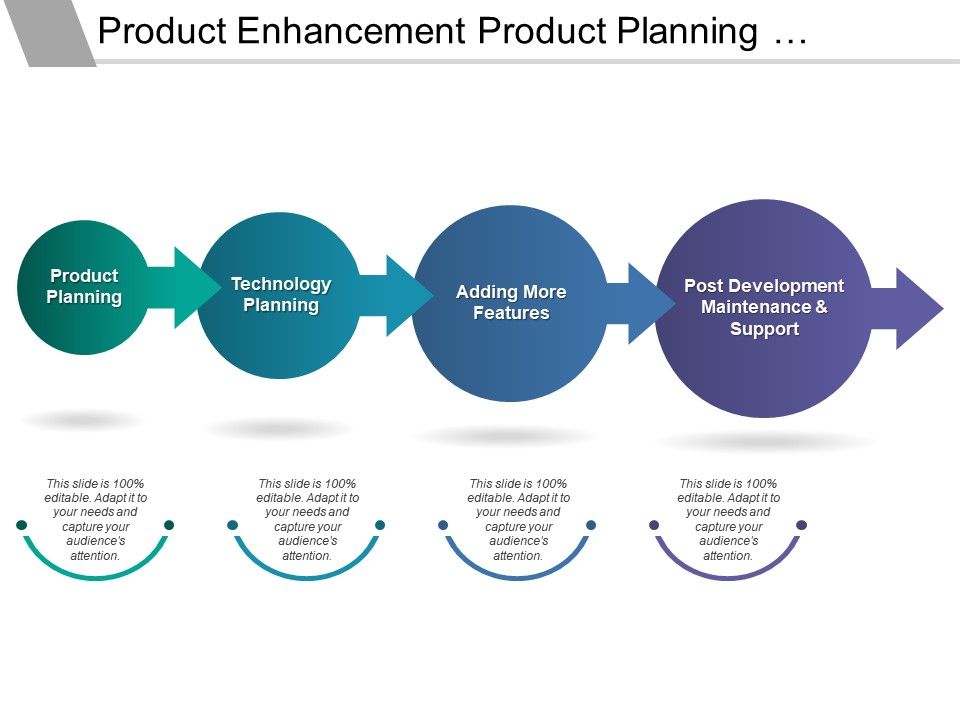Value Addition Presentation
| Introduction to Value Addition | ||
|---|---|---|
| Value addition refers to the process of enhancing the worth or desirability of a product or service. It involves adding extra features, benefits, or improvements to differentiate it from competitors. By increasing perceived value, businesses can charge higher prices and attract more customers. | ||
| 1 | ||
| Importance of Value Addition | ||
|---|---|---|
| Value addition helps businesses stand out in a crowded market and create a unique selling proposition. It leads to increased customer satisfaction by meeting their specific needs and preferences. By offering value-added products or services, businesses can build customer loyalty and long-term relationships. | ||
| 2 | ||
| Types of Value Addition | ||
|---|---|---|
| Product Enhancement: Adding new features, improving quality, or upgrading materials. Service Improvement: Enhancing customer experience through personalized service or faster delivery. Packaging and Presentation: Enhancing visual appeal, convenience, or sustainability of packaging. | ||
| 3 | ||
| Benefits of Value Addition for Businesses | ||
|---|---|---|
| Increased Profitability: Value-added products or services command higher prices, leading to higher profit margins. Competitive Advantage: Value addition helps businesses differentiate themselves and stay ahead of competitors. Expanded Market Share: By offering unique value, businesses can attract new customers and increase market share. | ||
| 4 | ||
| Benefits of Value Addition for Customers | ||
|---|---|---|
| Enhanced Quality: Value addition improves the overall quality and performance of products or services. Increased Convenience: Additional features or improvements make products or services more convenient to use. Customization and Personalization: Value-added offerings can be tailored to meet individual customer needs. | ||
| 5 | ||
| Strategies for Value Addition | ||
|---|---|---|
| Continuous Innovation: Regularly introducing new features or improvements to keep up with changing customer preferences. Market Research: Understanding customer needs and preferences to identify areas where value can be added. Collaboration: Partnering with other businesses or experts to bring in complementary value. | ||
| 6 | ||
| Examples of Value Addition | ||
|---|---|---|
| Technology: Adding new features or functionalities to electronic devices. Customer Service: Offering personalized assistance or extended support. Eco-Friendly Packaging: Using sustainable materials to enhance the environmental value of products. | ||
| 7 | ||
| Challenges in Value Addition | ||
|---|---|---|
| Cost: Value addition may require investment in research, development, or infrastructure. Market Acceptance: Ensuring that customers perceive the added value as beneficial and are willing to pay for it. Competition: Staying ahead of competitors who may also be adding value to their offerings. | ||
| 8 | ||
| Case Study - Apple Inc. | ||
|---|---|---|
| Apple consistently adds value to its products through innovative features and design. iPhone's introduction of touch screen technology revolutionized the smartphone industry. Apple's ecosystem of products and services enhances user experience and promotes brand loyalty. | ||
| 9 | ||
| Conclusion | ||
|---|---|---|
| Value addition is crucial for businesses to differentiate themselves and meet customer expectations. By continuously adding value, businesses can increase profitability, market share, and customer satisfaction. Embracing value addition as a strategic approach can drive long-term success. | ||
| 10 | ||
| References (download PPTX file for details) | ||
|---|---|---|
| Kotler, P., & Keller, K. L. (2016). Marketing... Porter, M. E. (1996). What is strategy?. Harv... Apple Inc. (2021). Retrieved from https:// ww... |  | |
| 11 | ||









